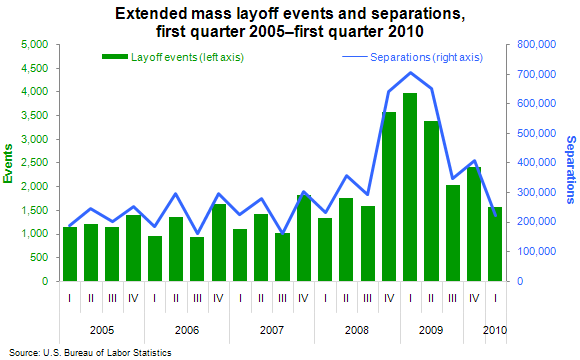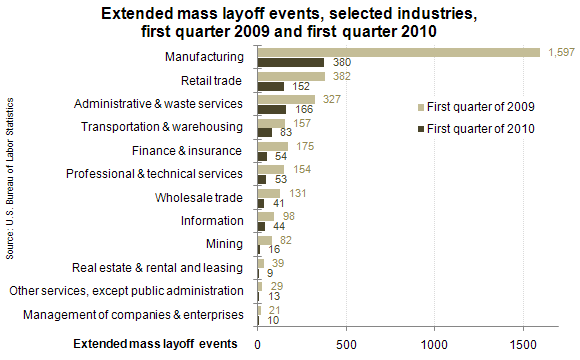Both mass layoff events and mass layoff separations decreased by record amounts from the same period a year earlier, when layoffs and associated separated workers reached program highs (with data available back to 1995). This is according to data released by the U.S. Department of Labor's Bureau of Labor Statistics.
Employers initiated 1,564 mass layoff events in the first quarter of 2010 that resulted in the separation of 221,150 workers from their jobs for at least 31 days. In the first quarter of 2009, there were 3,979 mass layoff events and 705,141 separations.
In the first quarter of 2010, 17 of 18 major industry sectors in the private nonfarm economy registered sharp declines over the year in the number of extended mass layoff events.
There were record decreases in the number of layoff events in 12 industries: mining; manufacturing; wholesale trade; retail trade; transportation and warehousing; information; finance and insurance; real estate and rental and leasing; professional and technical services; management of companies and enterprises; administrative and waste services; and other services, except public administration.
This data is from the Mass Layoff Statistics program. See "Extended Mass Layoffs — First Quarter of 2010" (HTML) (PDF), news release USDL-10-0644, to learn more. The quarterly series on extended mass layoffs cover layoffs of at least 31 days duration that involve 50 or more individuals from a single employer filing initial claims for unemployment insurance during a consecutive five-week period. Data for the most recent quarter is preliminary.






